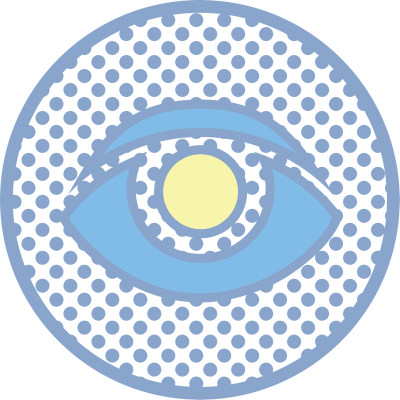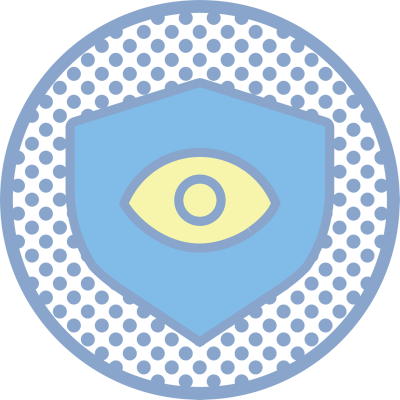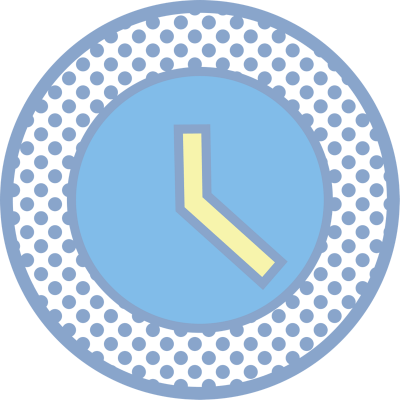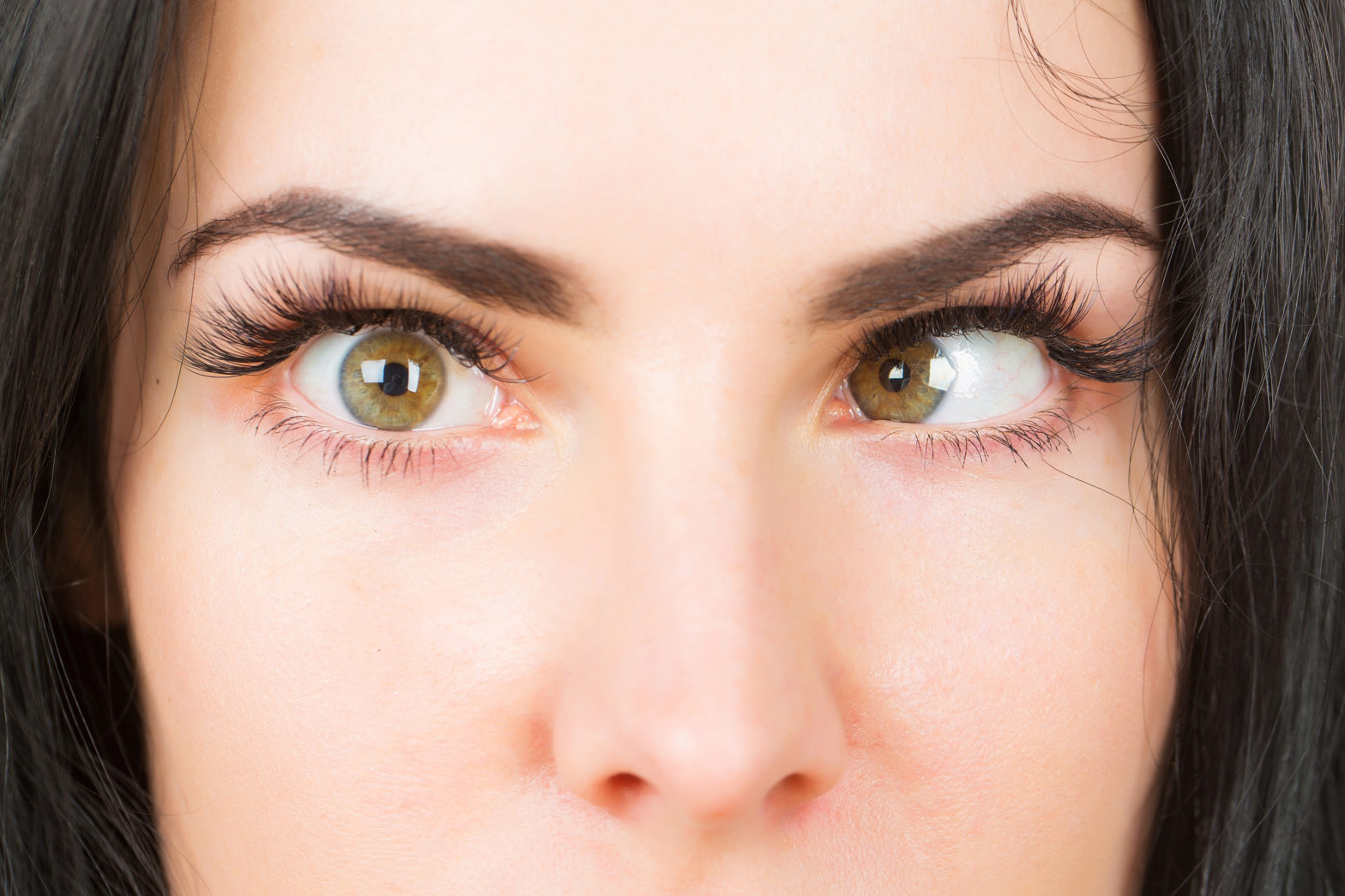What is Squint (Strabismus)?
Squint, also known as strabismus, is a condition where the eyes do not align properly. One eye may turn inward, outward, upward, or downward while the other eye remains focused. This misalignment can be constant or occasional, affecting depth perception and overall vision. Squint can occur in children and adults, leading to vision disturbances, eye strain, and even permanent vision loss if left untreated.
Symptoms of Squint (Strabismus)
The symptoms of squint vary depending on the severity and type of misalignment. Some common signs include:
- Misaligned eyes (one eye turning in a different direction)
- ಡಬಲ್ ದೃಷ್ಟಿ
- Difficulty focusing on objects
- Frequent eye strain or headaches
- Squinting or tilting the head to see clearly
- Reduced depth perception
- Inconsistent vision clarity

Causes of Squint (Strabismus)
Squint can develop due to various reasons, including:
-
Genetic factors : A family history of squint increases the risk.
-
Nerve disorders : Conditions affecting eye muscle control can lead to misalignment.
-
Refractive errors : Uncorrected myopia, hyperopia, or astigmatism can cause the eyes to work harder, leading to squint.
-
Eye muscle imbalances : Weakness or dysfunction in eye muscles can result in misalignment.
-
Neurological conditions : Certain brain disorders may interfere with eye coordination.
-
Injuries : Trauma affecting the eye muscles or nerves can cause squint.
-
Medical conditions : Issues like cerebral palsy or Down syndrome are often associated with squint.
Types of Squint (Strabismus)
ಒಮ್ಮುಖ ಸ್ಕ್ವಿಂಟ್
What is Convergent Squint? Also known as esotropia, this occurs when one eye turns inward...
ಪಾರ್ಶ್ವವಾಯು ಸ್ಕ್ವಿಂಟ್
What is Paralytic squint? This occurs when one or more eye muscles are paralyzed, leading...
Divergent Squint
ಸ್ಕ್ವಿಂಟ್, ಅಥವಾ ಸ್ಟ್ರಾಬಿಸ್ಮಸ್, ಕಣ್ಣುಗಳು ಸರಿಯಾಗಿ ಜೋಡಿಸದೇ ಇರುವಾಗ, ಒಂದು ಅಥವಾ ಎರಡನ್ನೂ ಬೇರೆ ಬೇರೆ ದಿಕ್ಕುಗಳಲ್ಲಿ ತಿರುಗಿಸಲು ಕಾರಣವಾಗುತ್ತದೆ.
Concomitant Squint
ಸ್ಕ್ವಿಂಟ್, ಅಥವಾ ಸ್ಟ್ರಾಬಿಸ್ಮಸ್, ಕಣ್ಣುಗಳು ಸರಿಯಾಗಿ ಜೋಡಿಸದೇ ಇರುವಾಗ, ಒಂದು ಅಥವಾ ಎರಡನ್ನೂ ಬೇರೆ ಬೇರೆ ದಿಕ್ಕುಗಳಲ್ಲಿ ತಿರುಗಿಸಲು ಕಾರಣವಾಗುತ್ತದೆ.

ಸ್ಕ್ವಿಂಟ್ ತಡೆಗಟ್ಟುವಿಕೆ
While some types of squint cannot be prevented, early detection and intervention can help reduce complications. Here are some preventive measures:
-
Regular eye check-ups, especially in children
-
Correcting refractive errors with glasses or contact lenses
-
Managing underlying health conditions that may contribute to squint
-
Eye exercises to strengthen coordination and alignment
-
Encouraging proper screen time habits to reduce eye strain
ಸ್ಕ್ವಿಂಟ್ಗೆ ಲಭ್ಯವಿರುವ ಪರೀಕ್ಷೆಗಳು ಯಾವುವು?
Squint diagnosis involves a series of eye examinations to determine the type and severity of misalignment. Common tests include:
-
ದೃಷ್ಟಿ ತೀಕ್ಷ್ಣತೆ ಪರೀಕ್ಷೆ: Measures the clarity of vision in each eye.
-
Cover test: Identifies the affected eye by covering one eye at a time.
-
Hirschberg test: Assesses the alignment of the corneal reflection.
-
Refraction test: Determines the presence of refractive errors.
Ocular motility test: Evaluates eye muscle movements.
Frequently Asked Questions (FAQs) about Squint
Can squint eyes be corrected?
Yes, squint eyes (strabismus) can be corrected through treatments such as eyeglasses, vision therapy, eye muscle exercises, Botox injections, or surgery, depending on the severity and underlying cause. Early intervention improves the chances of successful correction.
What are some effective exercises for squint eyes?
Effective exercises include pencil push-ups (focusing on a moving pencil), Brock string exercises (using beads on a string to improve eye alignment), and eye patching (covering the stronger eye to train the weaker one). However, exercises work best for mild cases and should be guided by an eye specialist.
Is squint eye a genetic condition?
Yes, squinting eyes can have a genetic component. If a family member has strabismus, there is a higher risk of developing it. However, it can also occur due to neurological issues, eye muscle imbalances, or conditions like premature birth.
What causes squint (strabismus) in adults?
In adults, strabismus can be caused by nerve damage, eye muscle disorders, stroke, head trauma, thyroid eye disease, or conditions like diabetes. It may develop suddenly or worsen over time, requiring treatment such as glasses, vision therapy, or surgery.
ಸ್ಕ್ವಿಂಟ್ ಶಸ್ತ್ರಚಿಕಿತ್ಸೆಯ ವೆಚ್ಚ ಎಷ್ಟು?
ಭವಿಷ್ಯದಲ್ಲಿ ವೈದ್ಯಕೀಯ ಬಿಕ್ಕಟ್ಟು ಸಂಭವಿಸಿದಲ್ಲಿ ನೀವು ಮತ್ತು ನಿಮ್ಮ ಕುಟುಂಬದ ಸದಸ್ಯರು ರಕ್ಷಣೆ ಪಡೆಯುವುದನ್ನು ಖಚಿತಪಡಿಸಿಕೊಳ್ಳಲು ಉತ್ತಮ ಆರೋಗ್ಯ ವಿಮಾ ಯೋಜನೆಯಲ್ಲಿ ಹೂಡಿಕೆ ಮಾಡುವುದು ಉತ್ತಮ ನಿರ್ಧಾರವಾಗಿದೆ. ನಾವು ಸ್ಟ್ರಾಬಿಸ್ಮಸ್ ಶಸ್ತ್ರಚಿಕಿತ್ಸೆಯ ವೆಚ್ಚಕ್ಕೆ ಬರುವ ಮೊದಲು, ಸ್ಕ್ವಿಂಟ್ ಕಣ್ಣಿನ ಶಸ್ತ್ರಚಿಕಿತ್ಸೆಯ ಯಶಸ್ಸಿನ ಪ್ರಮಾಣವು ಸಾಮಾನ್ಯವಾಗಿ ಹೆಚ್ಚಾಗಿರುತ್ತದೆ ಎಂಬುದನ್ನು ನೆನಪಿಟ್ಟುಕೊಳ್ಳುವುದು ಬಹಳ ಮುಖ್ಯ; ಹೀಗಾಗಿ, ಚಿಕಿತ್ಸೆಯ ವೆಚ್ಚವು ಒಂದು-ಬಾರಿ ಹೂಡಿಕೆಯಾಗಿದೆ ಎಂದು ಸಾಬೀತುಪಡಿಸುತ್ತದೆ.
ನೀವು ಸ್ಕ್ವಿಂಟ್ ಐ ಚಿಕಿತ್ಸೆ/ಶಸ್ತ್ರಚಿಕಿತ್ಸೆಗೆ ಹೋಗುತ್ತಿದ್ದರೆ, ಸುಮಾರು INR 7000 ರಿಂದ INR 1,00,000 ವರೆಗೆ ಬ್ರಾಕೆಟ್ ತೆಗೆದುಕೊಳ್ಳಿ. ಆದಾಗ್ಯೂ, ನೀಡಿರುವ ವೈದ್ಯಕೀಯ ಸೌಲಭ್ಯಗಳು ಮತ್ತು ಮೂಲಸೌಕರ್ಯಗಳೊಂದಿಗೆ ಇದು ಬದಲಾಗಬಹುದು.
ವಯಸ್ಕ ಸೋಮಾರಿ ಕಣ್ಣು ಎಂದರೇನು?
ಆಂಬ್ಲಿಯೋಪಿಯಾ, ವಯಸ್ಕ ಸೋಮಾರಿ ಕಣ್ಣು ಎಂದೂ ಸಹ ಕರೆಯಲ್ಪಡುತ್ತದೆ, ಇದು ವೈದ್ಯಕೀಯ ಸ್ಥಿತಿಯನ್ನು ಸೂಚಿಸುತ್ತದೆ, ಆರಂಭಿಕ ಜೀವನ ಹಂತಗಳಲ್ಲಿ ಅಸಹಜ ಅಥವಾ ಅನಿಯಮಿತ ದೃಷ್ಟಿ ಬೆಳವಣಿಗೆಯಿಂದ ಉಂಟಾಗುವ ಒಂದು ಕಣ್ಣಿನಲ್ಲಿ ದೃಷ್ಟಿ ಕಡಿಮೆಯಾಗಿದೆ. ಸೋಮಾರಿಯಾದ ಅಥವಾ ತುಲನಾತ್ಮಕವಾಗಿ ದುರ್ಬಲವಾದ ಕಣ್ಣು ಹೆಚ್ಚಾಗಿ ಹೊರಕ್ಕೆ ಅಥವಾ ಒಳಮುಖವಾಗಿ ಅಲೆದಾಡುತ್ತದೆ. ಸಾಮಾನ್ಯವಾಗಿ, ವಯಸ್ಕ ಸೋಮಾರಿಯಾದ ಕಣ್ಣು ಹುಟ್ಟಿನಿಂದಲೇ ಬೆಳವಣಿಗೆಯಾಗುತ್ತದೆ ಮತ್ತು 7 ವರ್ಷ ವಯಸ್ಸಿನವರೆಗೆ ಹೋಗುತ್ತದೆ.
ಇದು ಅಪರೂಪವಾಗಿ ಎರಡೂ ಕಣ್ಣುಗಳನ್ನು ಒಟ್ಟಿಗೆ ಬಾಧಿಸುತ್ತದೆಯಾದರೂ, ಮಕ್ಕಳಲ್ಲಿ ದೃಷ್ಟಿ / ದೃಷ್ಟಿ ಕಡಿಮೆಯಾಗಲು ಇದು ಪ್ರಾಥಮಿಕ ಕಾರಣಗಳಲ್ಲಿ ಒಂದಾಗಿದೆ. ವಯಸ್ಕ ಸೋಮಾರಿ ಕಣ್ಣಿನ ಕೆಲವು ಲಕ್ಷಣಗಳನ್ನು ನಾವು ಕೆಳಗೆ ಉಲ್ಲೇಖಿಸಿದ್ದೇವೆ:
- ತಲೆ ಬಾಗುವುದು ಅಥವಾ ಕಣ್ಣುಮುಚ್ಚುವುದು
- ಒಂದು ಕಣ್ಣು ಮುಚ್ಚುವುದು
- ಕೆಟ್ಟ ಆಳ ಗ್ರಹಿಕೆ
- ದೃಷ್ಟಿ ತಪಾಸಣೆ ಪರೀಕ್ಷೆಯ ಅಸಹಜ ಅಥವಾ ವಿಚಿತ್ರ ಫಲಿತಾಂಶಗಳು
- ಹೊರಗೆ ಅಥವಾ ಒಳಮುಖವಾಗಿ ಅಲೆದಾಡುವ ಕಣ್ಣು.
ವಯಸ್ಕ ಸೋಮಾರಿ ಕಣ್ಣಿನ ಅಪಾಯಕಾರಿ ಅಂಶಗಳು ಮತ್ತು ಕಾರಣಗಳು ಯಾವುವು?
ವಯಸ್ಕ ಸೋಮಾರಿ ಕಣ್ಣಿನ ಅನೇಕ ಅಪಾಯಕಾರಿ ಅಂಶಗಳಲ್ಲಿ ಕೆಲವು ಬೆಳವಣಿಗೆಯ ಅಸಾಮರ್ಥ್ಯಗಳು, ಸೋಮಾರಿ ಕಣ್ಣಿನ ಕುಟುಂಬದ ಇತಿಹಾಸ, ಅಕಾಲಿಕ ಜನನ ಮತ್ತು ಹೆಚ್ಚಿನವುಗಳನ್ನು ಒಳಗೊಂಡಿರುತ್ತದೆ. ಮತ್ತೊಂದೆಡೆ, ಈ ಕಣ್ಣಿನ ಸ್ಥಿತಿಯನ್ನು ಸಮಯಕ್ಕೆ ಚಿಕಿತ್ಸೆ ನೀಡದಿದ್ದರೆ, ಇದು ಶಾಶ್ವತ ದೃಷ್ಟಿ ನಷ್ಟಕ್ಕೆ ಕಾರಣವಾಗಬಹುದು.
ಕಣ್ಣಿನ ಸ್ನಾಯು ದುರಸ್ತಿ ಶಸ್ತ್ರಚಿಕಿತ್ಸೆಗೆ ಹೇಗೆ ತಯಾರಿಸುವುದು?
ಕಣ್ಣಿನ ಸ್ನಾಯು ದುರಸ್ತಿ ಶಸ್ತ್ರಚಿಕಿತ್ಸೆಗೆ ಮುನ್ನ ರೋಗಿಯು ಸಮಗ್ರ ಕಣ್ಣು ಮತ್ತು ದೈಹಿಕ ಪರೀಕ್ಷೆಗೆ ಒಳಗಾಗುತ್ತಾನೆ. ಹೆಚ್ಚುವರಿಯಾಗಿ, ಯಾವ ಸ್ನಾಯುಗಳು ಬಲವಾಗಿರುತ್ತವೆ ಅಥವಾ ದುರ್ಬಲವಾಗಿರುತ್ತವೆ ಎಂಬುದನ್ನು ನಿರ್ಧರಿಸಲು ವೈದ್ಯರು ಕೆಲವು ಕಣ್ಣಿನ ಅಳತೆಗಳನ್ನು ತೆಗೆದುಕೊಳ್ಳುತ್ತಾರೆ.

ಕಣ್ಣಿನ ತೊಂದರೆಯನ್ನು ನಿರ್ಲಕ್ಷಿಸಬೇಡಿ!
ಈಗ ನೀವು ಆನ್ಲೈನ್ ವೀಡಿಯೊ ಸಮಾಲೋಚನೆ ಅಥವಾ ಆಸ್ಪತ್ರೆಯ ಅಪಾಯಿಂಟ್ಮೆಂಟ್ ಅನ್ನು ಬುಕ್ ಮಾಡುವ ಮೂಲಕ ನಮ್ಮ ಹಿರಿಯ ವೈದ್ಯರನ್ನು ಸಂಪರ್ಕಿಸಬಹುದು
ಈಗ ಅಪಾಯಿಂಟ್ಮೆಂಟ್ ಕಾಯ್ದಿರಿಸಿ
